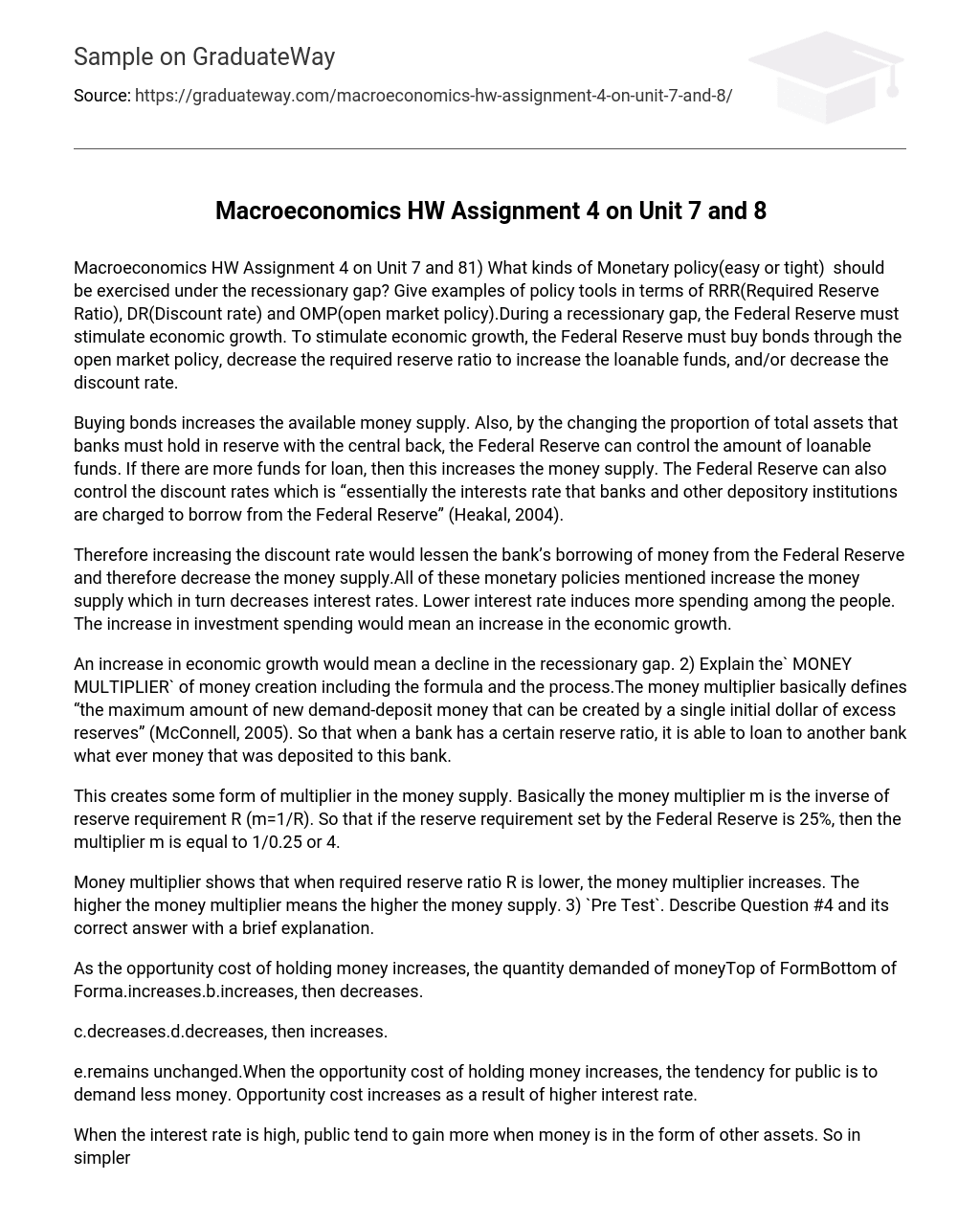What kinds of Monetary policy(easy or tight) should be exercised under the recessionary gap? Give examples of policy tools in terms of RRR(Required Reserve Ratio), DR(Discount rate) and OMP(open market policy).
During a recessionary gap, the Federal Reserve must stimulate economic growth. To stimulate economic growth, the Federal Reserve must buy bonds through the open market policy, decrease the required reserve ratio to increase the loanable funds, and/or decrease the discount rate.
Buying bonds increases the available money supply. Also, by the changing the proportion of total assets that banks must hold in reserve with the central back, the Federal Reserve can control the amount of loanable funds. If there are more funds for loan, then this increases the money supply. The Federal Reserve can also control the discount rates which is “essentially the interests rate that banks and other depository institutions are charged to borrow from the Federal Reserve” (Heakal, 2004).
Therefore increasing the discount rate would lessen the bank’s borrowing of money from the Federal Reserve and therefore decrease the money supply.All of these monetary policies mentioned increase the money supply which in turn decreases interest rates. Lower interest rate induces more spending among the people. The increase in investment spending would mean an increase in the economic growth. An increase in economic growth would mean a decline in the recessionary gap.
Explain the` MONEY MULTIPLIER` of money creation including the formula and the process.The money multiplier basically defines “the maximum amount of new demand-deposit money that can be created by a single initial dollar of excess reserves” (McConnell, 2005). So that when a bank has a certain reserve ratio, it is able to loan to another bank what ever money that was deposited to this bank.
This creates some form of multiplier in the money supply. Basically the money multiplier m is the inverse of reserve requirement R (m=1/R). So that if the reserve requirement set by the Federal Reserve is 25%, then the multiplier m is equal to 1/0.25 or 4. When the interest rate is high, public tend to gain more when money is in the form of other assets. So in simpler terms opportunity cost of holding money is the return when money is in the form of other assets.
References
- Heakal, R. (2004). Formulating Monetary Policy. Investopedia. Retrieved March 23, 2007 from http://www.investopedia. com/articles/04/050504.asp Mc
- Connell, B. (2005). Money Multiplier. Macroeconomics, 15/e.. Retrieved July 17, 2007 from http://www.mhhe.com/economics/mcconnell15e/graphics/mcconnell15eco/common/dothemath/moneymultiplier.html





